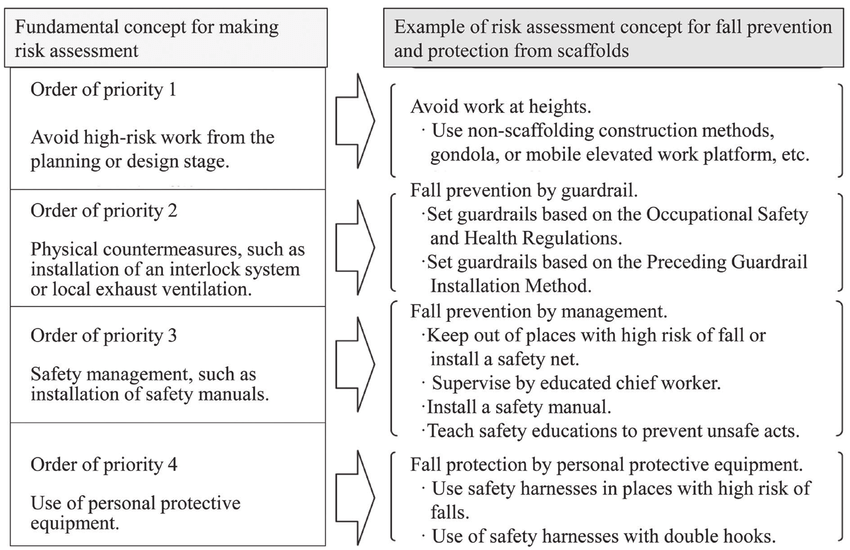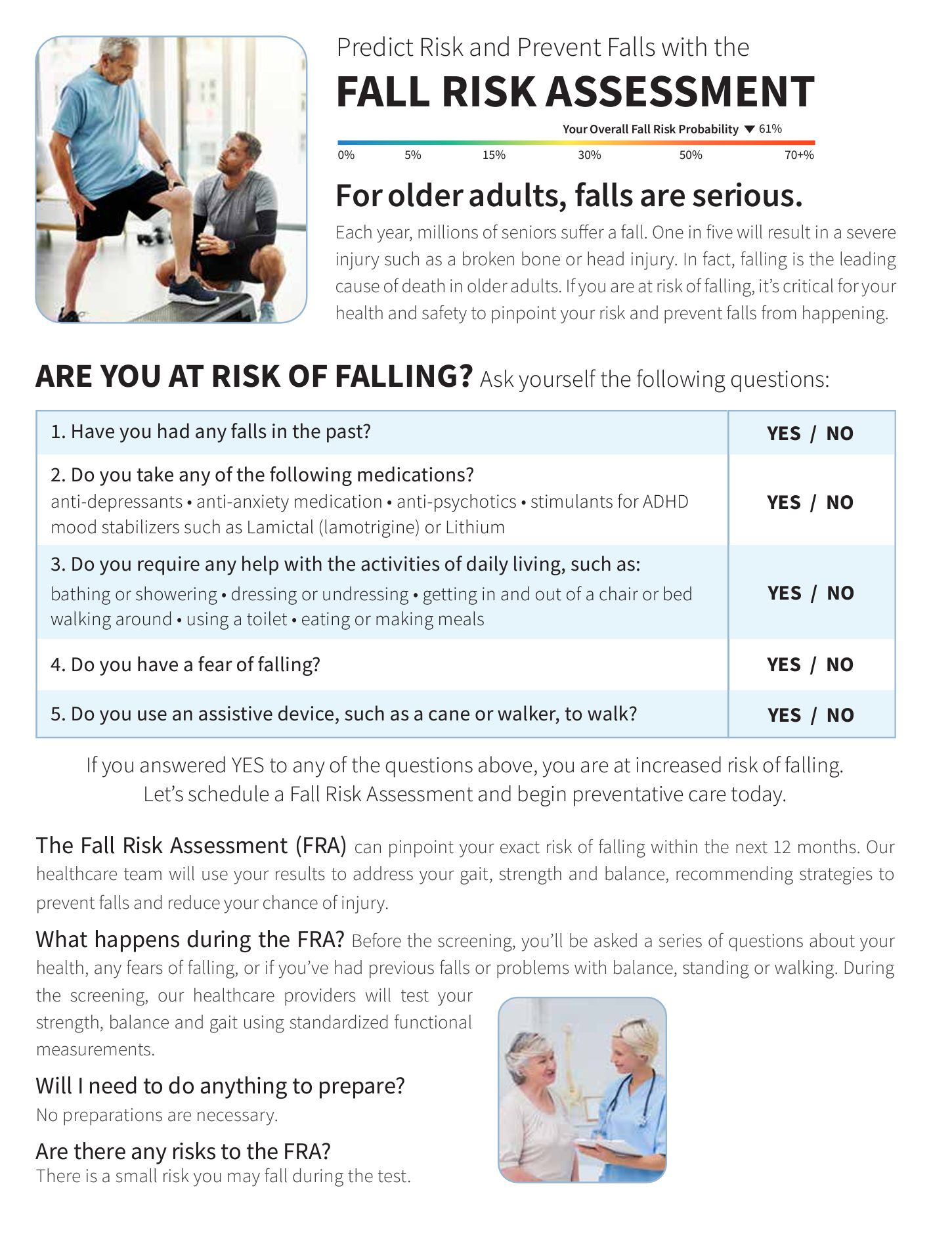Dementia Fall Risk Things To Know Before You Buy
The Main Principles Of Dementia Fall Risk
Table of ContentsIndicators on Dementia Fall Risk You Need To KnowThe Greatest Guide To Dementia Fall RiskThe Best Guide To Dementia Fall Risk7 Simple Techniques For Dementia Fall Risk6 Easy Facts About Dementia Fall Risk Explained
Nevertheless, based on indicators and signs and symptoms, such as proof of head injury or a brand-new focal neurologic deficiency, calculated tomography or MRI of the brain might be suggested - Dementia Fall Risk. An analysis for sources of syncope need to be carried out just if there is strong suspicion, as in the situation of persistent, inexplicable falls
Healthcare providers use a fall threat assessment to identify your threat elements for dropping and make helpful suggestions. A fall danger evaluation is important since recognizing which factors raise your possibilities of falling aids you: Decrease your risk of falling or hurting on your own.
All adults 65 years and older need to have a preliminary loss danger screening. Have actually fallen in the previous year. Worry regarding dropping.
Rumored Buzz on Dementia Fall Risk

Discover this extensive nursing treatment strategy and administration overview to effectively avoid danger for falls among people. Get crucial understanding regarding the nursing assessment, nursing medical diagnosis, and objectives specifically customized to clients who go to danger for falls. A is defined as an event that results in a person coming to relax accidentally on the ground or flooring or various other lower degree (WHO, 2021).
According to the Centers for Illness Control and Avoidance (CDC),, causing over 34,000 fatalities for that age group. Falling is the second leading cause of death from unintended injuries globally. Fatality from drops is a significant and endemic issue amongst older people. It is estimated that loss fatality rates in the U.S

Every year, over 800,000 people are hospitalized as a result of falls. Registered nurses play a major duty in protecting against falls for their patients via education, assessing autumn threat, creating safer settings, and supplying treatments in protecting against injuries from drops. Several risk variables and problems add to drops, including the following:. Aged 65 years and older; reduced limb prosthesis; use assistive gadgets such as pedestrian, crane, and mobility device; living alone.
Patient will demonstrate careful prevention steps. Patient and caretakers will execute methods to enhance security and prevent falls in the home. Falls are because of several elements, and a holistic strategy to the specific and environment is crucial. Intend a person is thought about at high threat for drops after the screening.
An Unbiased View of Dementia Fall Risk
A calls for making use of a confirmed tool that scientists have analyzed to be helpful in calling check this the causes of falls in an individual. The level of fall danger can be identified making use of the analysis of innate and extrinsic factors.
People are most likely to drop once more if they have sustained several drops in the previous six months. The older populace is at raised risk of fall-related readmissions based upon a research recognizing the factors predictive of repeat drops associated results (Prabhakaran et al., 2020). Persons with damaged recognition and disorientation may not recognize where they are or what to do to assist themselves.
The capability of people to protect themselves from drops is impacted by such variables as age and advancement. Older people with weak muscle mass are more likely to drop than those that keep muscle strength, flexibility, and endurance.
Some Known Details About Dementia Fall Risk
Less comparison level of sensitivity was fairly connected with both raised prices of drops and other injuries, while decreased aesthetic acuity was just connected with boosted loss price (Timber et al., 2011). Sensory news assumption of ecological stimulations is critical to safety. Vision and listening to problems limitation the individual's ability to view threats in the surroundings.
Older adults that have bad equilibrium or trouble walking are most likely to drop. These troubles may be linked with absence of workout or a neurological cause, arthritis, or other clinical conditions and treatments. A crucial risk variable highlighted in a study is that adults with rheumatoid arthritis go to high danger of falls, including inflamed and tender lower extremity joints, tiredness, and use of psychotropic medications (Stanmore et al., 2013).